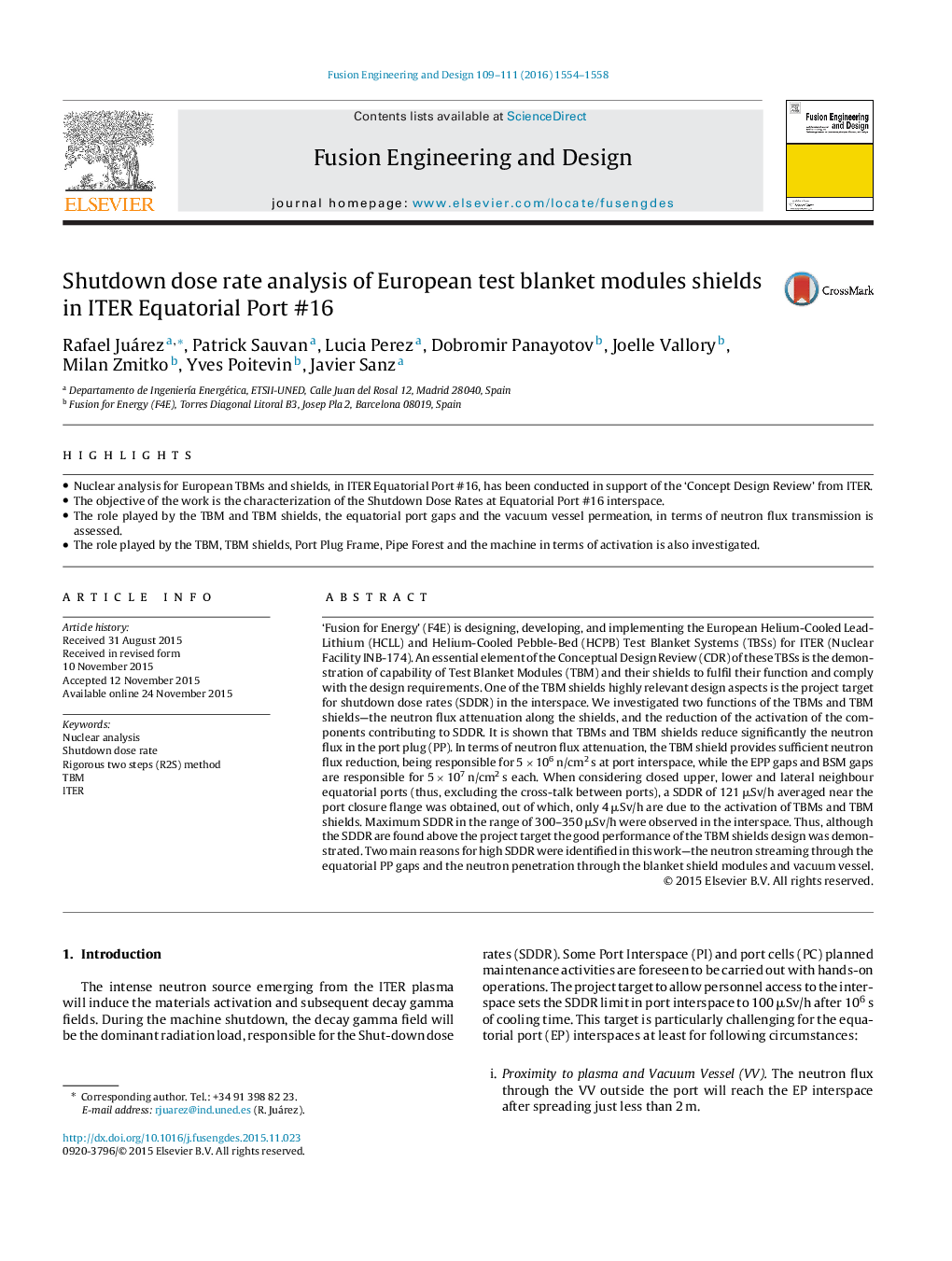| Article ID | Journal | Published Year | Pages | File Type |
|---|---|---|---|---|
| 4921383 | Fusion Engineering and Design | 2016 | 5 Pages |
Abstract
'Fusion for Energy' (F4E) is designing, developing, and implementing the European Helium-Cooled Lead-Lithium (HCLL) and Helium-Cooled Pebble-Bed (HCPB) Test Blanket Systems (TBSs) for ITER (Nuclear Facility INB-174). An essential element of the Conceptual Design Review (CDR) of these TBSs is the demonstration of capability of Test Blanket Modules (TBM) and their shields to fulfil their function and comply with the design requirements. One of the TBM shields highly relevant design aspects is the project target for shutdown dose rates (SDDR) in the interspace. We investigated two functions of the TBMs and TBM shields-the neutron flux attenuation along the shields, and the reduction of the activation of the components contributing to SDDR. It is shown that TBMs and TBM shields reduce significantly the neutron flux in the port plug (PP). In terms of neutron flux attenuation, the TBM shield provides sufficient neutron flux reduction, being responsible for 5 Ã 106 n/cm2 s at port interspace, while the EPP gaps and BSM gaps are responsible for 5 Ã 107 n/cm2 s each. When considering closed upper, lower and lateral neighbour equatorial ports (thus, excluding the cross-talk between ports), a SDDR of 121 μSv/h averaged near the port closure flange was obtained, out of which, only 4 μSv/h are due to the activation of TBMs and TBM shields. Maximum SDDR in the range of 300-350 μSv/h were observed in the interspace. Thus, although the SDDR are found above the project target the good performance of the TBM shields design was demonstrated. Two main reasons for high SDDR were identified in this work-the neutron streaming through the equatorial PP gaps and the neutron penetration through the blanket shield modules and vacuum vessel.
Related Topics
Physical Sciences and Engineering
Energy
Energy Engineering and Power Technology
Authors
Rafael Juárez, Patrick Sauvan, Lucia Perez, Dobromir Panayotov, Joelle Vallory, Milan Zmitko, Yves Poitevin, Javier Sanz,
